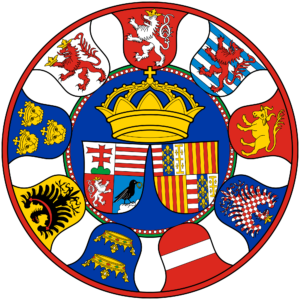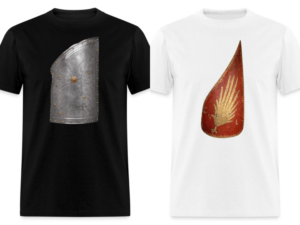22 December 1476 The wedding of Matthias and Beatrix

On December 22, 1476, King Matthias and Beatrice of Aragon were married in Buda.
In 1464, King Matthias’s first wife, 14-year-old Catherine of Podjebrad, died in childbirth. Widowed at 19, he was the only son of Hunyadi, and the country had to look for a new wife. Being king of Hungary was far from being a life insurance policy – he was expected to personally lead the army in the event of an enemy attack – but the stability of the country required a legitimate heir. Still, the wedding had to wait 12 years, as marriage also meant a diplomatic alliance, and finding the right person was difficult. Sadly, it was not to be, but that became clear only later. However, Matthias was not lacking in love, read more about his lover named Borbála:
https://www.hungarianottomanwars.com/essays/borbala-the-lover-of-matthias/
Beatrice was of little help to Hungary diplomatically. Her father, King Ferdinand, was balancing on a throne in Naples, which was particularly threatened, and he could not think of helping Hungary militarily, in 1480 he asked Matthias for help when the Turks besieged Otranto. Hungarian mercenaries led by Magyar Balázs helped to retake the city from the Turks. You can read more about the campaign of Magyar Balázs here:
https://www.hungarianottomanwars.com/1372-1490/general-magyar-balazs-saves-otranto-in-1481/

All in all, from a diplomatic and a succession point of view, Beatrice was not a fortunate choice, although this was not yet apparent in 1476. The family was already burdened; Beatrix’s father had a passion for keeping the stuffed heads of his enemies in glass cases in a room. It has been suggested that Beatrix was no longer a virgin when she arrived in Hungary at the age of 19. Moreover, one of her alleged lovers was found murdered in Naples, and it was rumored that Beatrix had him killed, thus eliminating the potential threat to her reputation…

The importance of virginity was particularly important to medieval princesses – not primarily for moral reasons – because it was the only way to ensure that the king would be the father of any potential offspring, since DNA testing did not exist in the Middle Ages. There is no doubt that the queen was a major influence on Matthias, and her sophistication and artistic patronage helped to fuel the already flourishing Renaissance culture in Hungary.

Beatrice arrived in Hungary in December 1476 via Styria, where twenty of Hungary’s noblest women were waiting to accompany her to Székesfehérvár. Matthias met his future wife half a mile from the coronation city with his 3,000 knights. The entourage was adorned with pearls, gold, and jewels. The monarch was accompanied by the king of Bosnia, a former friend of his father’s, Újlaki Miklós, and many other Hungarian nobles and German princes. (Please note that I use the Oriental name order for Hungarians, where the surname comes first).

On the ground where the “lovers” met for the first time in their lives, there was a 13-foot-long blue carpet, which the Italian envoys tore up for themselves after they had passed (the carpet was of great value, but everyone was still offended by their behavior).
The king met Beatrix in the middle of the carpet, and she fell to her knees, but Matthias lifted her by the hand and led her into the splendid tent he had prepared. The bridegroom presented his bride with a golden wreath with a diamond ring in the center. After short speeches in Latin by the bishops, the queen rode into Fehérvár on a white horse, the king on a brown (Hungarian “pej”) horse. Information about the rings can be found here:
https://www.hungarianottomanwars.com/masterpieces-of-art/clasp-transylvania/

They attended Mass in the Coronation Church and then returned separately to their quarters. The day after the reception, Beatrix was crowned with the Holy Crown of Hungary. The wedding itself took place a few days later, with many dinners, in Buda, where they arrived in gilded carriages. It took place in the Church of Our Lady of the Assumption, now called Matthias Church, on December 22, 1476, the Sunday before Christmas.

The wedding was attended by Matthias’s mother, Szilágyi Erzsébet, and of course the Hungarian elite, as well as Beatrix’s entourage and a number of foreign ambassadors. Beatrix wore a gold crown and pearls were strung in her hair. After the ceremony, congratulations and gifts were exchanged, and then the country welcomed its new Queen with a feast. The feast took place in the Knights’ Hall of the Castle Palace, which was lined with a red tapestry decorated with the coats of arms of the Queen and the King. The “dínomdánom” (feast) consisted of 24 courses and, according to Hungarian tradition, was served from top to bottom, with dishes of birds first, followed by those of land animals and plants.

Meanwhile, the best foreign lutenists of the time served the Italian guests, and Hungarian lyrics sang the deeds of Hungarian heroes to the lovers of Hungarian songs. During the festivities, the members of the Venetian embassy were particularly prominent, but the highlight was undoubtedly the hour-long Italian dance performed by Beatrix, no doubt accompanied by her courtiers.

With Beatrix, a small court moved from Naples to Buda, as courtiers and servants followed the Duchess. Galeotto noted with some irony in his book that Beatrix’s ladies-in-waiting “looked ugly next to their mistress, especially in Hungary, because the Hungarian race is very beautiful.” It is not impossible that they were chosen to make Beatrix look particularly good in their presence. When the entertainment was over, the royal couple retired to their room.

Source: Magyarforum
You can find my Matthias series on my page here:
https://www.hungarianottomanwars.com/essays/king-matthias-corvinus-1443-1490

Dear Readers, I can only make this content available through small donations or by selling my books or T-shirts.
If you like my writings, please feel free to support me with a coffee here:
You can check out my books on Amazon or Draft2Digital, they are available in hardcover, paperback, or ebook:
https://www.amazon.com/dp/198020490X
or at https://books2read.com/b/boYd81


My work can also be followed and supported on Patreon: Become a Patron!http://Become a Patron!


https://hungarianottomanwars.myspreadshop.com/



